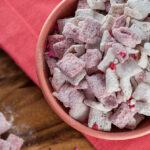The Best Fluffy Pancakes recipe you will fall in love with. Full of tips and tricks to help you make the best pancakes.

Table of Contents
What is Tobiko? Understanding the Basics of Flying Fish Roe
Tobiko, also known as flying fish roe, is one of the most beloved sushi toppings in Japanese cuisine. These tiny, colorful eggs are a staple in sushi restaurants and are prized for their unique texture and flavor. With their vibrant orange hue and satisfying crunch, Tobiko adds a pop of excitement to any sushi dish. But what exactly is Tobiko, and why is it so popular?
“Tobiko is like the confetti of the sushi world – tiny, colorful, and bursting with flavor!”
In addition to sushi, Tobiko can also be used in salads, appetizers, and even pasta dishes. It’s versatile and pairs beautifully with various condiments, such as Tajín, to create flavor-packed snacks.
The Meaning and Origins of Tobiko in Japanese Cuisine
Tobiko originates from flying fish, a species known for their incredible ability to leap out of the water and glide through the air. In Japanese cuisine, Tobiko is highly valued not only for its taste but also for the cultural significance it carries. It represents an appreciation for the sea’s bounty, as well as the art of enhancing natural flavors.
Tobiko vs Masago: Key Differences You Should Know
If you’ve ever wondered about the difference between Tobiko and Masago, you’re not alone. While they look similar, these two types of roe have distinct qualities. Tobiko is slightly larger, with a more pronounced crunch and a brighter, richer taste. On the other hand, Masago comes from capelin fish and has a softer texture with a milder flavor. Think of Tobiko as the lively, outgoing sibling, while Masago is the understated, introverted one.
For a deeper dive into comparing similar foods, check out this guide on the difference between Cavatelli and Cavatappi.
Types of Tobiko: A Colorful Array of Flavors

Tobiko isn’t just orange – it comes in a variety of colors and flavors to suit different tastes and visual preferences. Each type of Tobiko is infused with unique ingredients to create distinct variations:
- Red Tobiko: The classic, vibrant orange Tobiko with a balanced flavor.
- Black Tobiko: Infused with squid ink for a sophisticated, slightly salty taste.
- Green Tobiko: Flavored with wasabi for a spicy kick that sushi lovers adore.
- Orange Tobiko: The most common type, known for its bright hue and versatility.
This colorful array not only enhances the visual appeal of dishes but also introduces subtle variations in taste that can elevate the dining experience.
How Tobiko is Made: From Ocean to Your Plate
The Harvesting Process of Flying Fish Roe
The journey of Tobiko begins in the oceans, where flying fish are carefully harvested for their roe. Fishermen gather the eggs from natural spawning areas or by using specially designed nets. Once collected, the roe is cleaned and processed to ensure its freshness and quality.
Preparing Tobiko for Sushi and Other Dishes
After harvesting, Tobiko is typically cured with a mixture of salt, sugar, and other seasonings. This curing process enhances its flavor while preserving the delicate eggs. The result is a product that’s ready to be incorporated into sushi rolls, Nigiri, and creative recipes like the ones featured in the Ultimate Guide to Blackstone Recipes.
Nutritional Benefits of Tobiko: Is It Healthy?
Tobiko isn’t just delicious – it’s also surprisingly nutritious. Let’s take a closer look at its nutritional profile:
| Nutrient | Per 1 Tbsp (15g) |
|---|---|
| Calories | 20 |
| Protein | 1g |
| Fat | 1g |
| Sodium | 500mg |
As you can see, Tobiko is low in calories and packed with protein, making it a guilt-free addition to your meals. However, it’s worth noting that its sodium content can be quite high, so moderation is key.
Health Considerations: Sodium and Mercury Content
While Tobiko is generally safe to eat, it’s important to be mindful of its sodium levels, especially for those with high blood pressure. Additionally, like all seafood, Tobiko may contain trace amounts of mercury. If you’re pregnant or have dietary restrictions, consult your healthcare provider before indulging.
Tobiko in Sushi: A Culinary Adventure
When it comes to sushi, Tobiko is an undeniable superstar. It’s often used to top sushi rolls, adding a burst of color, texture, and flavor. Let’s explore how Tobiko enhances different sushi dishes:
Popular Sushi Rolls Featuring Tobiko
Some of the most famous sushi rolls wouldn’t be complete without a sprinkle of Tobiko. For instance:
- California Roll: Tobiko is often sprinkled on top for a crunchy finish.
- Dragon Roll: This visually stunning roll gets an extra flair with a generous Tobiko topping.
- Rainbow Roll: The vibrant colors of Tobiko perfectly complement the assortment of fish and avocado.
Tobiko not only adds flavor but also elevates the presentation of these rolls, making them more appealing to sushi enthusiasts.
Tobiko Nigiri: A Simple Yet Elegant Dish
If you prefer something simpler, Tobiko Nigiri is a must-try. This dish features a small ball of sushi rice topped with a heaping spoonful of Tobiko and often wrapped with a strip of seaweed. The result? A bite-sized delight that’s as satisfying as it is beautiful.
Beyond Sushi: Creative Ways to Use Tobiko

While Tobiko is most commonly associated with sushi, its versatility allows it to shine in other dishes as well. Here are some creative ways to incorporate Tobiko into your cooking:
Tobiko in Salads and Appetizers
Looking to elevate your salads? Sprinkle some Tobiko on top for a burst of flavor and texture. It pairs particularly well with Asian-inspired salads that include ingredients like sesame oil, ginger, and soy sauce.
For appetizers, consider making Tobiko-topped crostini or deviled eggs. The crunch of the Tobiko contrasts beautifully with creamy textures, making for a memorable starter.
Tobiko Recipes for Home Chefs
Ready to get creative in the kitchen? Here are some easy ideas to try:
- Tobiko Pasta: Toss cooked pasta with olive oil, garlic, and Tobiko for a unique twist on traditional recipes.
- Tobiko Dip: Mix Tobiko with cream cheese, sour cream, and a touch of lemon juice for a flavorful spread.
- Tobiko Omelette: Add a spoonful of Tobiko to your omelette filling for a pop of color and flavor.
Need more inspiration? Check out this guide on creating the perfect dipping sauce to pair with Tobiko-based appetizers.
Tobiko vs Caviar: Understanding the Differences
Both Tobiko and caviar are considered delicacies, but they cater to different tastes and occasions. Here’s how they compare:
Taste, Texture, and Price Comparisons
Tobiko has a crunchy texture and a smoky, slightly sweet flavor. Caviar, on the other hand, is softer and creamier with a more buttery taste. When it comes to price, Tobiko is significantly more affordable, making it a great entry point for those new to roe.
Think of Tobiko as the fun, approachable cousin, while caviar is the luxurious relative reserved for special occasions.
Choosing the Right Roe for Your Dish
The choice between Tobiko and caviar often depends on the dish you’re preparing. Tobiko is ideal for sushi and fusion dishes, while caviar pairs better with traditional fine dining fare like blinis or crackers with crème fraîche.
Common Problems with Tobiko and Their Solutions
Even the most seasoned Tobiko enthusiasts may run into some challenges. Here’s how to tackle them:
Where to Buy Fresh Tobiko: Tips and Recommendations
Finding high-quality Tobiko can be tricky. Your best bet is to visit a trusted Asian grocery store or specialty seafood market. If you’re shopping online, ensure the seller offers fresh, well-packaged products with clear expiration dates.
For more tips on sourcing quality ingredients, you might find this guide on ingredient selection helpful.
Storage Tips: Keeping Tobiko Fresh for Longer
Once you’ve purchased your Tobiko, proper storage is key. Keep it refrigerated and consume it within a week of opening. For longer storage, freezing is an option, but be aware that freezing may slightly alter its texture.
Handling Tobiko Safely: Avoiding Contamination
Always use clean utensils when handling Tobiko to prevent contamination. If you’re using it as a topping, add it just before serving to maintain its freshness and texture.
The Cost of Tobiko: Factors That Influence Price
Average Price Ranges and Where to Save
Tobiko is relatively affordable compared to other roe types like caviar. On average, it costs around $5–$10 for a small container. To save, consider purchasing in bulk or seeking out local seafood markets.
Premium Tobiko vs Budget Options
Premium Tobiko is often larger and more flavorful, but budget options can still deliver a great experience. Look for reputable brands and check reviews before purchasing.
Frequently Asked Questions About Tobiko
Is Tobiko Real Fish Eggs?
Yes, Tobiko is real fish eggs harvested from flying fish. These tiny eggs are cured to enhance their flavor and are a staple in Japanese cuisine.
Does Tobiko Taste Like Caviar?
While both Tobiko and caviar are types of roe, their flavors are distinct. Tobiko is crunchier and has a smoky, slightly sweet taste, whereas caviar is softer and creamier with a buttery flavor.
Is Tobiko Gluten-Free?
Generally, Tobiko is gluten-free. However, some flavored varieties may include soy sauce or other seasonings containing gluten, so it’s essential to check the label if you have dietary restrictions.
What is the Difference Between Roe and Tobiko?
Roe is a general term for fish eggs, while Tobiko specifically refers to the roe of flying fish. Tobiko is cured and often infused with flavors and colors, making it a distinct ingredient.
Final Tips for Enjoying Tobiko Like a Pro
Pairing Tobiko with Sushi Condiments
To enhance Tobiko’s flavor, pair it with classic sushi condiments like soy sauce, wasabi, and pickled ginger. A touch of ponzu sauce can also add a zesty kick.
Making Tobiko the Star of Your Meal
Don’t be afraid to experiment! Whether you’re adding it to sushi, pasta, or even appetizers, Tobiko is versatile enough to shine in any dish. Remember, the key is to balance its bold flavor with complementary ingredients.








